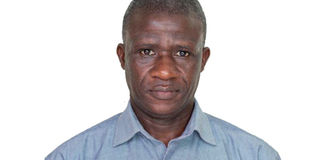Prime
Mak@100 in Uganda@60: innovation into commercialisation

Matsiko Kahunga
What you need to know:
We need a paradigm shift here. Separate innovation from commercialization
‘…well, we will not dwell much about the first 40 years, since at the time Makerere was an affiliate college… Makerere’s prime was when it was a constituent college of the University of East Africa. Those were our days, the reason we had wakina Julius Nyerere and Benjamin Mkapa, Anyang’ Nyong’, Ngugi wa Thiong’o in Makerere…while Mulago Medical School was the region’s centre of excellence in medicine, Nairobi excelled in business studies and Dar es Salaam in law. The alumni of that period still form the cream of what true East African integration should be…. we need a renaissance ….’
Mzee BSN reminisced the good old days, as we picked him from Entebbe, to attend the centenary celebrations at Makerere University, on the eve of Uganda’s diamond independence celebrations. He is a Nairobi alumnus, but has strong links with Makerere through three friends he worked with in a multinational across East Africa for close to three decades. One of these eventually settled to teach in Makerere, where he is now a professor and dean, at whose invitation Mzee came to attend Makerere@100 celebrations. Besides celebrations, his visit had a business angle to it, itself linked with Makerere and Uganda. His professor friend is the lead researcher on an innovation into a paediatric diaper made from natural fibre, impregnated with an absorbent oil extracted from a common herb used to stop bleeding and is known even to children in the community. The uniqueness of this project is that after the initial laboratory research and community trials of prototypes, all financed by a grant, the innovator team patented their intellectual property. And it is at this stage that Mzee BSN came in handy, thanks to his long experience in the FMCG (fastmoving consumer goods) industry. With a positive net present value (NPV), the innovation is moving from the laboratory to the factory. ‘This is where Makerere and the Uganda government need a focused close collaboration’, Mzee argues as he takes us through the initial investment and market penetration plan for the diaper.
According to him, most innovations (largely foreign-funded) die at the laboratory stage once the funding is exhausted, thus the discoveries make no impact on the socio-economic life of the country. Even those that go beyond the laboratory, they undergo a long diffusion curve and at times fail to break-even, because the innovators combine the science with the business.
We need a paradigm shift here. Separate innovation from commercialisation. Innovators patent prototypes, and seek investors. Investors can come in under outright acquisition, whereby they buy the patent from the innovators, or can be equity investors: the innovators bring the science, the investor brings the money, form a company and hire management to start and run the business. And this is what the innovators of this diaper have done. After patenting and having intellectual property rights, Mzee BSN came in to do the maths, and the innovation proved commercially viable. He sold the bankable investment plan to a regional FMCG giant. They took a 70 percent stake in the business, and raised the seed investment capital.
The innovators retained 25 percent, having earned handsomely from the patent sale, while Mzee acquired a 5 percent stake under a stock option plan for management. This is what Uganda government, Makerere and other universities should do. Universities innovate, government invests into commercialisation, in majority-shareholding PPPs with national, regional and foreign private investors. Nestlé, the global food and nutrition giant, was born out of a laboratory study by Pharmacist Henri Nestlé, seeking a remedy against child malnutrition. We can pick lessons.




